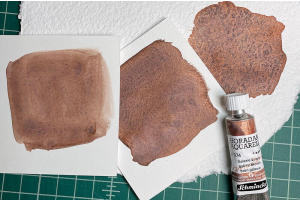We use cookies to make your experience better. To comply with the new e-Privacy directive, we need to ask for your consent to set the cookies. Learn more.
Cheap Joe’s Art Stuff Art Blog
Tips, Tricks, Thoughts, and inspiration from across the art spectrum.
Those Unreliable Eyes of Ours...

Hi, everyone!
So, by now, I’m sure that most of you have seen this image:

If you haven’t heard, this dress took the internet by storm last week when this photo was posted with the question, “What color is this dress?”
Opinions were completely divided when one half said, “Blue and black!” while the other half claimed, “White and gold!” (I’m on the white and gold side, by the way.)
What do you think? Surely, you have a concrete standpoint and can’t POSSIBLY fathom how anyone could see the opposite, but it IS possible!
The science behind this color theory is all about the rods and cones in our eyes. The rods determine the lightness and darkness that we see, while the cones interpret what we perceive to be color.
Our eyes have no way of knowing exactly WHAT a color is (because that’s our brain’s job), so they just give us all the information to sort out. When we see color, what we’re actually seeing is the light being bounced OFF of the objects. Our eyes absorb that light and then our brain sorts out the information based on its relation to things around it–like how things lit up in a blue light will have a cooler tone, even though the things themselves haven’t changed color at all.
To put this visually, here’s an example of the photo (center) being adjusted to expand on its low-lights (right) and highlights (left):

It’s easier to see the other end of the spectrum now, right?
But with all of this in mind, it has to be pretty discouraging when you think about how others perceive our works of art.
Maybe you got a bad critique once and you’ve been wondering why? Well, it could have been the lighting. OR it could have been the frame or mounting technique you used.
In addition to the fact that this is just an unreliable photo, it doesn’t help that we ALL see things differently from one another.
So what’s the best way to ensure that our works are coming across the way we intended?
The most significant impact (that we’re able to control) is how you mount your work. A black mat or mount will always bring out the darkest tones in your work, while a white mat or mount will draw your eyes to the highlights.
Take this dress photo, for example.
On a black background, it’s easier to see the blue/dark tones:

But on a white background, those highlights shine right through as your eye adjusts to accepting the brighter values:

Mounting on either black or white will absolutely always influence your work’s visual effect.
But, when possible, you should try to be sure that the type of light you’re working in is the same type of light that you’ll be presenting in.
Most galleries use “natural daylight” bulbs because it gives off the truest appearance of the color.
If you don’t have a studio/working space with huge windows–or if you’re like me and prefer to work at night–then consider illuminating your space with Daylight Replacement Bulbs! Not only are these bulbs less harsh on your eyes, but they’re a much safer bet that your work will look consistent in various environments. They’re as low as $5.93 and can fit in any regular light socket!
And if you’re in the market for a new lamp, feel free to peruse the array of natural daylight desk lamps, clip-on lamps, floor lamps, magnifying lamps, and replacement bulbs we have here!
Now get out there and paint what you see!







